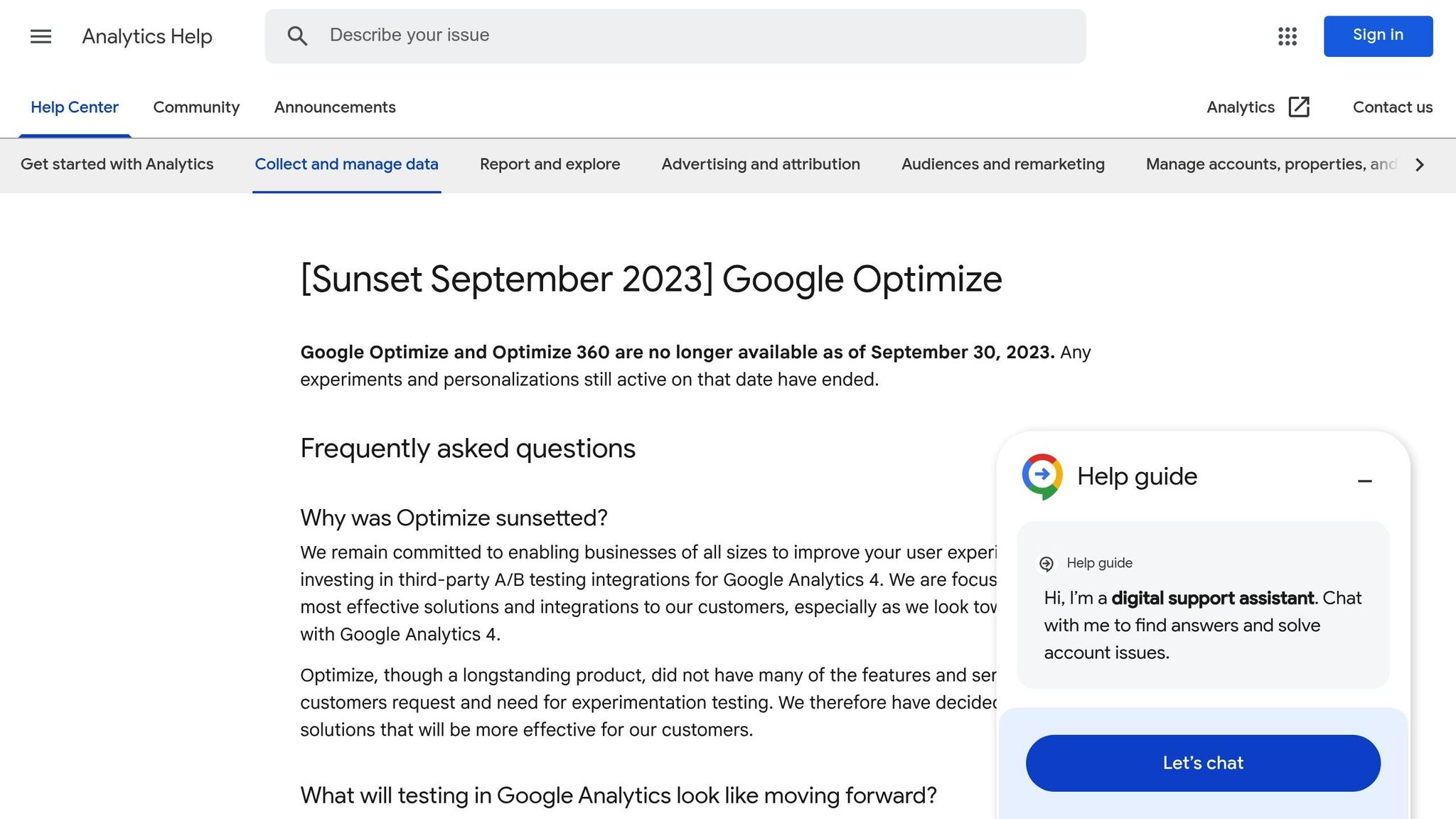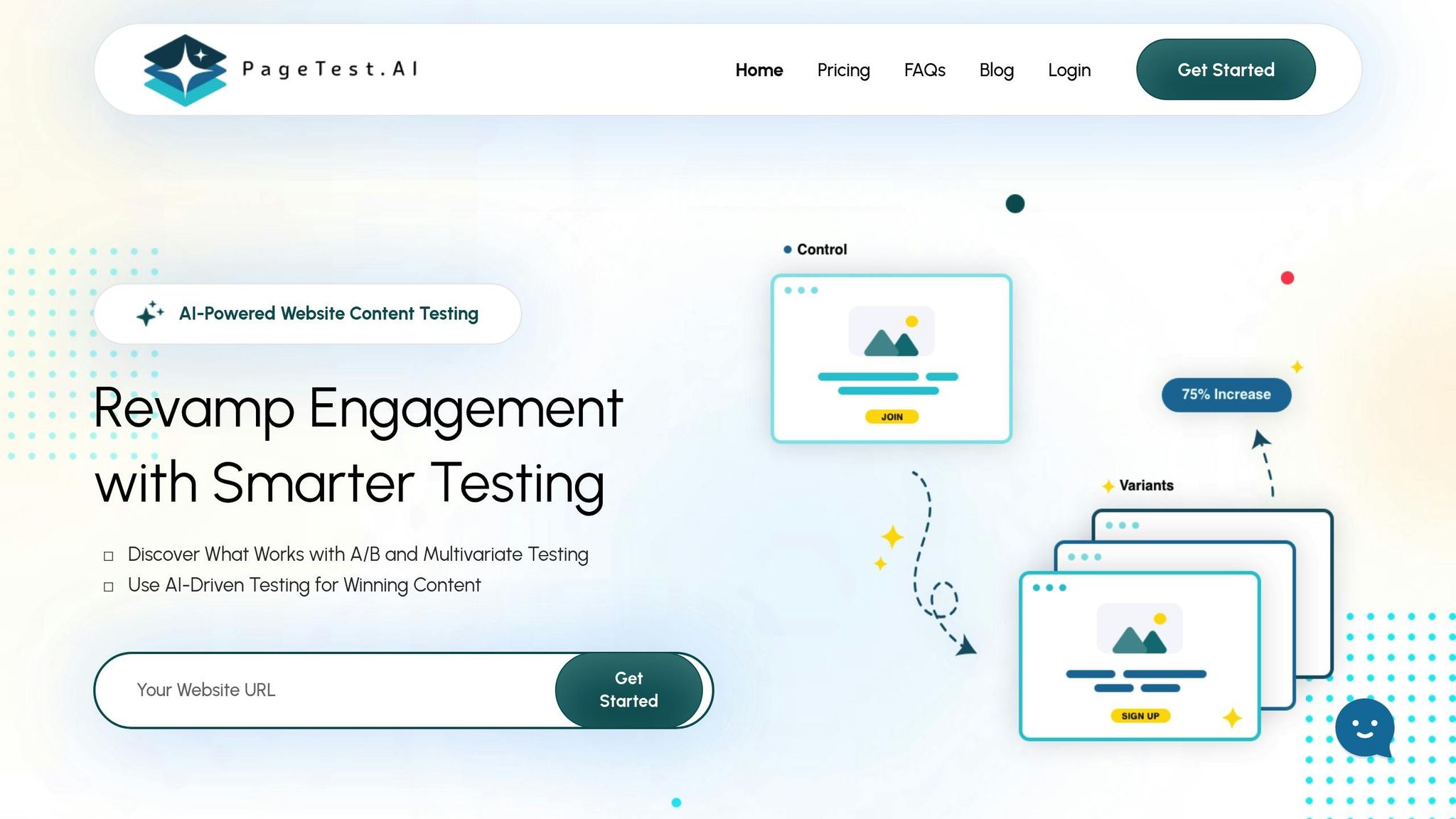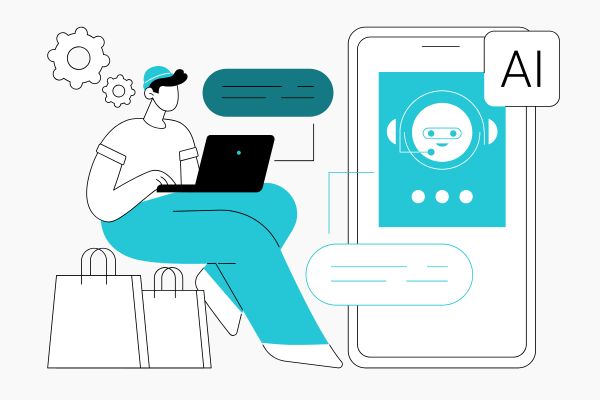

CRO Tools: Free vs Paid Solutions Compared

CRO Tools: Free vs Paid Solutions Compared
 23-06-2025 (Last modified: 28-07-2025)
23-06-2025 (Last modified: 28-07-2025)
Want to improve your website’s conversions but unsure whether to use free or paid CRO tools? Here’s the short answer:
- Free tools like Google Optimize (discontinued in 2023) were great for basic A/B testing and small budgets but lacked advanced features.
- Paid tools like PageTest.AI (starting at $10/month) offer AI-driven testing, detailed analytics, and scalability for businesses aiming to grow.
Key Takeaways:
- Google Optimize: Free, simple integration with Google Analytics, but limited features and now unavailable.
- PageTest.AI: AI-powered, supports advanced testing, and offers plans from $10 to $200/month, depending on needs.
Quick Comparison:
| Feature | Google Optimize (Free) | PageTest.AI (Paid) |
|---|---|---|
| Cost | Free | $10–$200/month |
| Testing Types | A/B, multivariate | A/B, multivariate with AI |
| Ease of Use | Moderate setup | Easy (Chrome extension) |
| Analytics | Basic | Detailed user behavior |
| Scalability | Limited | Unlimited (Agency plan) |
| AI Features | None | Yes |
If you’re just starting, free tools can help you learn the basics. But for better results and growth, paid options like PageTest.AI provide more value with advanced features and automation.
9 Best CRO Tools to 10X Your Conversion Rates in 2025 (Ranked by Best Use Cases)
1. Google Optimize

Google Optimize was a free tool from Google designed to help businesses improve their websites by testing different page variations to increase conversions. Although it was discontinued in September 2023, its features demonstrate why it became a go-to option for many users seeking cost-effective optimization solutions.
Testing Capabilities
Google Optimize provided three main testing methods tailored to different optimization needs:
- A/B Testing: This allowed users to compare two or more versions of a webpage to see which one performed better in driving conversions.
- Multivariate Testing: With this, users could test multiple elements on a page at the same time to find the best combination for results. However, it was capped at 16 combinations.
- Split URL Testing: This method let users test entirely different web pages against each other by using JavaScript redirects.
On top of these, the platform included up to 10 personalized experiences based on factors like device type, location, age, and user behavior, making it easier to tailor content for specific audience segments.
Analytics and Reporting
One standout feature of Google Optimize was its seamless integration with Google Analytics. As Silver put it:
"Integrating your testing tool with Google Analytics can be a headache. Not with Google Optimize as it comes with Google Analytics integration baked in the source."
This built-in connection meant all testing data was automatically funneled into Google Analytics, allowing businesses to track goals – like sign-ups or purchases – and analyze how different test variations influenced those outcomes.
Integration and Scalability
Google Tag Manager made deploying the Optimize snippet simple, eliminating the need for manual code changes on websites. It also worked with GA4 audiences, giving users access to more in-depth analysis through Google Analytics 4.
Cost and Value
The biggest draw of Google Optimize was its price – free. This accessibility made it an ideal choice for small businesses and startups. However, with its discontinuation, finding a free A/B testing tool has become increasingly difficult as of June 2025. This shift forces businesses to consider paid alternatives, which can add significant costs to their budgets.
Up next, we’ll dive into how PageTest.AI provides a paid solution for advanced CRO insights.
2. PageTest.AI

PageTest.AI brings AI-driven efficiency to CRO testing, presenting itself as the paid alternative in this comparison. Its focus is on simplifying optimization with automation powered by artificial intelligence. Here’s a breakdown of its standout testing features.
Testing Capabilities
PageTest.AI supports both A/B and multivariate testing, leveraging AI to manage content suggestions and predict test outcomes. As the platform itself states:
"Let AI do all the heavy lifting for you. Take the effort out of content production for your tests."
With its Chrome extension, users can easily select website elements – like headlines, CTAs, button text, and product descriptions – for testing through a simple point-and-click interface.
To measure success, PageTest.AI tracks a variety of metrics, including clicks, engagement, time on page, and detailed user behavior. In one notable example, the platform achieved a 297% increase in button clicks during a test.
Analytics and Reporting
The platform goes beyond basic conversion metrics by offering detailed performance tracking. It monitors clicks, engagement rates, time on page, and scroll depth to provide a well-rounded view of user behavior. For enterprise users, API support allows seamless integration of these insights into existing analytics tools.
Integration and Scalability
PageTest.AI is easy to integrate, requiring only a simple JavaScript snippet. It works with all major website builders and CMS platforms, as well as custom-built websites. As its technical documentation explains:
"As long as you can add a JavaScript snippet to your website, then you shouldn’t have any problems. So this includes all the major website building and CMS platforms, as well as any home grown DIY websites."
The platform is designed to scale effortlessly, catering to both small startups and large enterprises. It offers customizable enterprise plans for high-traffic sites and supports unlimited testing for organizations needing low-code implementation. The flexibility in integration is complemented by a range of pricing options.
Cost and Value
PageTest.AI’s pricing is structured to accommodate different needs:
- Startup Plan: $10/month, includes 10 tests across 10 pages and 10,000 test impressions.
- Enterprise Plan: $50/month, covers 100 tests across 100 pages with 100,000 test impressions.
- Agency Plan: $200/month, offers unlimited testing on unlimited pages with 1 million test impressions.
This pricing model makes PageTest.AI an accessible AI-powered option, minimizing the manual work typically associated with CRO testing while delivering advanced insights for ongoing optimization.
sbb-itb-6e49fcd
Advantages and Disadvantages
When deciding between free and paid CRO tools, it’s crucial to weigh their strengths and weaknesses to find the best fit for your business goals and budget. Below is a side-by-side comparison of Google Optimize (a free tool) and PageTest.AI (a paid option).
| Aspect | Google Optimize (Free) | PageTest.AI (Paid) |
|---|---|---|
| Cost | Free | $10-$200/month |
| Setup Complexity | Moderate technical setup required | Simple JavaScript snippet, Chrome extension |
| AI Features | None | AI-generated content variations and predictions |
| Testing Types | A/B testing, multivariate testing | A/B testing, multivariate testing with AI optimization |
| Analytics Depth | Basic conversion tracking | Detailed metrics: clicks, engagement, time on page, scroll depth |
| Integration | Seamless with Google Analytics | Works with all major website builders and CMS platforms |
| Support | Community forums with limited help | Dedicated support, including video calls (Enterprise+ plans) |
| Scalability | Limited by Google’s restrictions | Unlimited testing on Agency plan |
| Learning Curve | Steep for beginners | Minimal, with a point-and-click interface |
| Enterprise Features | Google Optimize 360 required (expensive) | Built-in enterprise features available at $50/month |
This breakdown highlights the unique advantages and challenges of each tool, helping you make an informed decision.
Free Tools: What to Expect
Advantages
Free tools like Google Optimize are perfect for businesses with tight budgets. They provide essential features such as A/B testing at no cost. Additionally, their integration with Google Analytics makes them a natural choice for those already using Google’s suite for performance tracking.
Disadvantages
However, free tools often fall short when it comes to advanced features and support. For instance, Google Optimize lacks AI-powered content creation, leaving users to manually create variations for testing. Support is also limited to community forums, which can be frustrating if you encounter complex issues.
Paid Tools: How They Stand Out
Advantages
Paid tools like PageTest.AI address many of the shortcomings of free options. With AI automation, you can quickly generate content variations, saving time and effort. The tool’s Chrome extension simplifies the setup process, making it accessible even for non-technical users. Plus, detailed analytics – tracking metrics like engagement and scroll depth – offer deeper insights into user behavior. These features can provide a strong return on investment, especially for businesses looking to scale.
As CRO expert Stewart Rogers explains:
"If each customer has a lifetime value of $1,000, and doubling your conversion rate leads to an additional 200 customers per year, the return on investment of your CRO tool is a whopping $200,000 return from a $6,000 spend."
Disadvantages
The main drawback of paid tools is the cost. Plans can range from $10 to $200+ per month, depending on the features and scale of testing required. For larger enterprises, monthly expenses could climb to $2,000. While this can be a significant investment, many businesses find it worthwhile due to the potential for increased conversions.
Business Size and Needs
For small businesses, starting with free tools is a practical way to learn the basics of user behavior without financial risk. On the other hand, larger enterprises often require paid tools to access advanced capabilities like personalization, detailed analytics, and scalability.
Interestingly, while 71% of companies run at least two A/B tests per month, only one in eight tests leads to a meaningful improvement. This underscores the importance of using tools with advanced features like AI optimization to maximize the impact of your testing efforts.
Final Thoughts
Ultimately, the choice between free and paid CRO tools depends on your current needs and growth plans. Free tools are a great starting point for basic testing, but paid options become indispensable when advanced features, dedicated support, or scalability are required. Carefully consider your business’s stage and objectives to make the most effective decision.
Conclusion
Choosing between free and paid CRO tools depends on your business’s current needs, technical expertise, and growth plans. Free tools like Google Optimize are a great starting point for companies beginning their optimization journey. On the other hand, paid solutions such as PageTest.AI offer advanced features and AI-powered automation that are ideal for businesses looking to scale their efforts.
With 77% of businesses conducting A/B tests and the personalization market valued at $943 million, selecting the right CRO tool is no longer optional – it’s a necessity. As Rutger Kühr from Pricewise wisely notes:
"CRO is not just about getting the golden nugget of a 20% uplift, but also about preventing bad ideas from going live."
For small businesses focusing on straightforward tests, free tools may be sufficient at first. But if you’re looking for features like AI-generated content variations, in-depth behavioral analytics, or the ability to scale across multiple websites, paid options like PageTest.AI (starting at $10/month) offer far greater value. These tools are designed to meet the needs of growing businesses while simplifying technical challenges.
While free tools often come with steeper learning curves, paid solutions like PageTest.AI emphasize ease of use. Features such as their Chrome extension and intuitive interface help teams navigate complex tasks without frustration, removing common barriers associated with traditional tools.
When weighing costs, it’s essential to think about return on investment rather than just monthly fees. CRO helps reduce customer acquisition costs by maximizing the value of your existing visitors and users. Even premium tools priced between $50 and $200 per month can be a smart investment if they lead to measurable gains in your conversion rates.
Ultimately, the right tool depends on where your business is and where it’s headed. Small businesses can start with free tools to build foundational knowledge, upgrading to paid options as their needs evolve. For larger enterprises, advanced personalization and robust testing capabilities make paid solutions a must-have from the start.
FAQs
What are the benefits of using a paid CRO tool like PageTest.AI compared to free options like Google Optimize?
When it comes to paid CRO tools like PageTest.AI, they bring a lot more to the table compared to free options, such as the now-defunct Google Optimize. These tools offer advanced features like AI-powered test suggestions, real-time performance monitoring, and smooth integration with any CMS. The best part? You can make impactful changes to your site without relying on a developer.
On top of that, paid tools often deliver deeper data analysis, more flexible customization options, and access to dedicated customer support. These perks enable businesses to make smarter, data-backed decisions, helping to improve conversions in a way that free tools just can’t match.
How does PageTest.AI use AI to improve A/B and multivariate testing for businesses?
PageTest.AI uses AI-powered tools to simplify and speed up A/B and multivariate testing. By automating the creation of test variations and providing smart, data-backed recommendations, it takes much of the manual work out of the experimentation process. This means businesses can test more ideas with less effort and lower risk.
The platform also helps pinpoint successful strategies faster, giving businesses the ability to fine-tune their websites and improve conversions effectively. With these features, it cuts down on time, eliminates much of the guesswork, and delivers insights tailored to your specific objectives.
What should businesses consider when choosing between free and paid CRO tools?
When choosing between free and paid CRO tools, it’s crucial to weigh your budget alongside your specific objectives – whether that’s improving website performance or driving more conversions. Paid tools typically come with advanced features, stronger support, and deeper analytics, making them a solid choice for businesses with the resources to invest. On the other hand, free tools can be a practical solution for those working with tighter budgets.
It’s also important to factor in ease of use, the tool’s ability to provide actionable insights, and how well it integrates with your current systems. Don’t overlook the potential return on investment (ROI) – a tool that helps you make the most of your existing website traffic can pay off in the long run. Lastly, opt for tools with a strong track record to ensure they deliver reliable results.
Related posts
say hello to easy Content Testing
try PageTest.AI tool for free
Start making the most of your websites traffic and optimize your content and CTAs.
Related Posts

 13-12-2025
13-12-2025
 Becky Halls
Becky Halls
The Biggest Marketing Shifts Coming in 2026: What Actually Matters Now
2026 isn’t bringing “the future of marketing.” It’s bringing the correction. The dust is finally settling after years of AI noise, platform changes, and search unpredictability. And we’re now seeing what actually sticks, and the shifts that will shape how marketing teams operate for the next decade… These aren’t trends for trends’ sake. They’re structural […]

 13-12-2025
13-12-2025
 Ian Naylor
Ian Naylor
User Engagement Signals That Impact Rankings
How CTR, dwell time, bounce rate and pages-per-session influence SEO rankings — and practical steps (UX, titles, testing) to improve engagement.

 12-12-2025
12-12-2025
 Ian Naylor
Ian Naylor
AI-Driven Mobile Segmentation with Real-Time Data
AI mobile segmentation turns real-time behavioral, contextual, and transactional signals into dynamic user groups that boost personalization, retention, and conversions.
